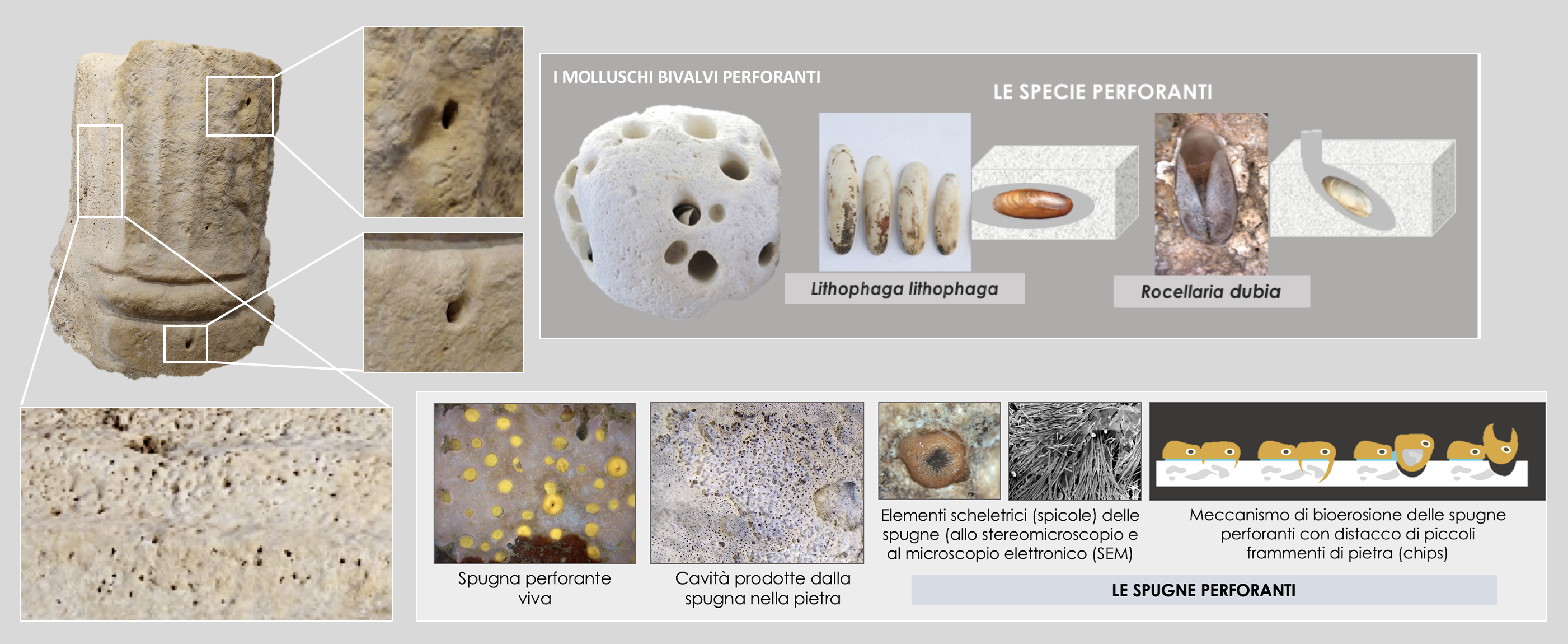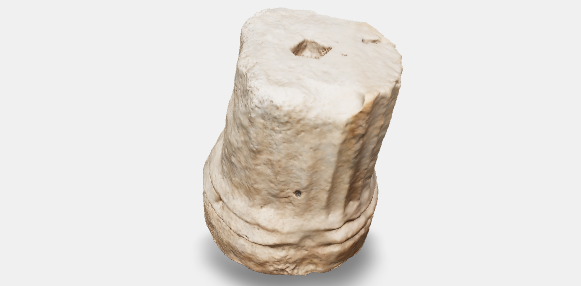Ionian column base. Channelled shaft. Quadrangular hole for inserting a cramp in the upper section (1). Moulded torus.
The calcareous nature of this artefact allowed for a widespread growth of boring animals. In particular, tiny circular perforations (pitting) are caused by the growth of boring sponges, while isolated, bigger holes were produced by bivalve endolithic molluscs.

Davidde B., Ricci S., Poggi D., Bartolini M., 2010. Marine bioerosion of stone artefacts preserved in the Museo Archeologico dei Campi Flegrei in the Castle of Baia (Naples), Archaeologia Maritima Mediterranea; 7: 75-115.
Gullini G. 1980, La cultura architettonica di Locri Epizefiri. Documenti e interpretazioni, Taranto.
Iannelli M.T. et al. 1993, Kaulonia – Rinvenimenti archeologici tra il tempio dorico e il fiume Assi, in Archeologia Subacquea I, pp. 1-20.
Ricci S., Davidde B., Bartolini M., Priori G. F., 2009. Bioerosion of lapideous objects found in the underwater archaeological site of Baia (Naples). Archaeologia Maritima Mediterranea, 6: 167-188.
Ricci S., Sacco Perasso C., Antonelli, F., Davidde Petriaggi B., 2015. Marine Bivalves colonizing roman artefacts recovered in the Gulf of Pozzuoli and in the Blue Grotto in Capri (Naples, Italy): boring and nestling species. International Biodeterioration & Biodegradation (98) 89 – 100.
Ricci, S., Pietrini, A. M., Bartolini, M., Sacco Perasso, C., 2013. Role of the microboring marine organisms in the deterioration of archaeological submerged lapideous artifacts (Baia, Naples, Italy). International Biodeterioration & Biodegradation 82 (2013) 199-206.
1 The base, according to Giorgio Gullini, depicts a Western and original interpretation of tradition. Can be dated around the first quarter of the V century B.C. and attributed to the Syracusan culture thanks to its affinities with the Ionian temple of Syracuse. See GULLINI 1980, pp. 92-94 and tabl. X, 2; but also 1983, p. 295 and tabl. XXVI, 2.



